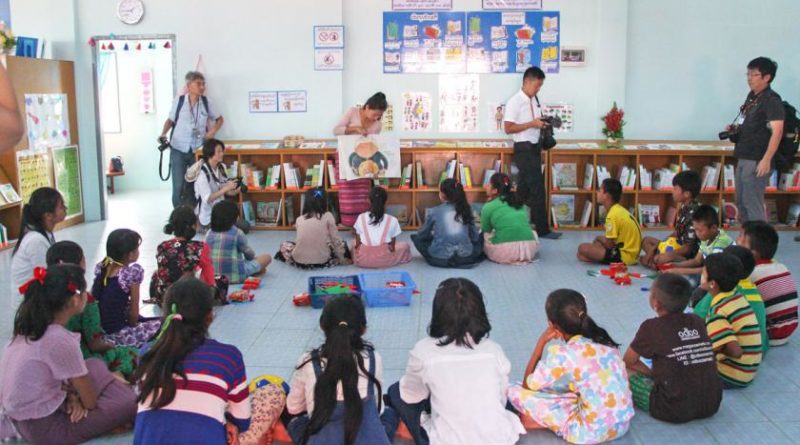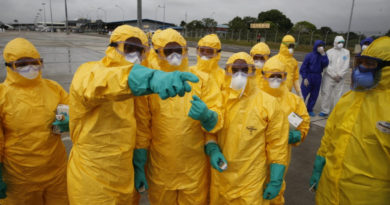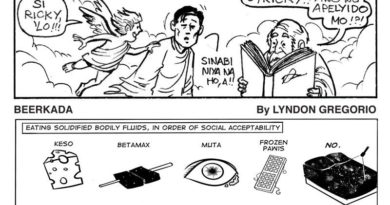HEADLINES: YANGON- Kayin battlefield rises from the ashes
Children study at the newly built primary school in Law Kay Kaw. Photo: Sit Htet Aung
.
.
After passing a road sign that reads, “Welcome to Lay Kay Kaw new city,” motorists pass other signs giving such information as “Fierce fighting happened here” and “No one lived here five years ago.”
A few metres off the road, near Thaung Yin River in Kawkareik township of Kayin State, another sign reads Pha Lu Hill in the Kayin and Myanmar languages.
ADS by Cloud 9:
.
– SPACE RESERVE FOR YOUR ADVERTISEMENT –

The area is the location of the once-impregnable “Pha Lu camp,” a major outpost of the Karen National Union (KNU) and its Karen National Liberation Army.
It is about 14.5 kilometres from the bustling town of Myawady, on the Thai-Myanmar border.
ADS by Cloud 9:
.
– SPACE RESERVE FOR YOUR ADVERTISEMENT –

In the 1990s, the Tatmadaw (military) launched a major offensive against Pha Lu camp, which was surrounded with several layers of barbed wire, concrete bunkers and minefields.
The fighting, which lasted for several weeks, was so fierce that the residents of Myawady had to flee to Thailand. The land was soaked with the blood of both sides’ fighters. The Tatmadaw assault was relentless, until it finally overran the outpost.
At first glance, the scars of that painful past in Pha Lu camp are no longer visible. It is hard to imagine that such violence could have occurred in a place that is now bustling with activity, where workers till the farms and children run around in careless abandon.
Uniformed KNU fighters carrying automatic rifles still stand at almost every corner of Lay Kay Kaw, but they wear smiles and lazily move about the streets, obviously not anticipating any trouble. They stand alongside uniformed government troops who were dispatched to the area to welcome visitors and donors who would like to help in the development of the former battlefield.
ADS by Cloud 9:
.
– SPACE RESERVE FOR YOUR ADVERTISEMENT –

A grand ceremony was held there recently to hand over a housing project built by the Japanese non-governmental organisation Nippon Foundation for residents affected by the fighting in Mon and Kayin states.
At the ceremony, which was held in an area under KNU control, General Mya Tun Oo, chief of the Myanmar General Staff, said the ongoing development in the region reflects the improving relations between the KNU and Tatmadaw.
He said that Lay Kay Kaw has turned from a desolate reminder of the brutal conflicts of the past into a bustling city.
The KNU fought the government for more than 60 years before it joined the peace process in 2012 and signed the Nationwide Ceasefire Agreement in 2015 during the administration of President U Thein Sein.
ADS by Cloud 9:
.
– SPACE RESERVE FOR YOUR ADVERTISEMENT –

True, there had been some clashes between the KNU and government forces after the signing of the NCA, but mechanisms are in place to quickly resolve misunderstandings.
The government and KNU have joined hands to help people who fled the area more than 30 years return home.
Nan Khin Htwe Myint, chief minister of Kayin, said, “It is not enough to say we welcome back the refugees. We have to provide for their basic needs, especially shelter, but the lack of government resources has made it difficult.”
To fix the problem, the government welcomed international aid, paving the way for the Japanese government and the Nippon Foundation, which have become the main organisations helping refugees in Kayin and Mon.
The Japanese government has provided US$36 million for rehabilitation projects in conflict areas in the two states and nearby Tanintharyi Region, where the KNU operates.
ADS by Cloud 9:
.
– SPACE RESERVE FOR YOUR ADVERTISEMENT –

“Peace cannot be implemented immediately,” said Japanese Ambassador Ichiro Maruyama. “If an armed group has signed the ceasefire agreement, we will continue cooperating with the Myanmar government in the interest of residents of the area controlled by that group.”
Yohei Sasakawa, the foundation’s chair, said Japan focuses on helping people in conflict zones and does not interfere in the negotiations between the government and ethnic armed groups.
He said, “We will give humanitarian support so that nationwide peace would be achieved.”
ADS by Cloud 9:
.
– SPACE RESERVE FOR YOUR ADVERTISEMENT –

The government, Tatmadaw and the foundation said Lay Kay Kaw is a model of development cooperation.
Sasakawa said, “We want to show how a ceasefire is good for the vulnerable, such as women and children.”
Each house built by the foundation in Lay Kay Kaw cost between K5 million and K10 million. Some houses are still empty and covered with creepers, waiting for their new tenants.
The project has 780 homes with more than 3000 residents, most of whom are related to KNU members who returned from the refugee camps.
There is a government-run primary school in Lay Kay Kaw, but the community has to fund its own high school with contributions.
ADS by Cloud 9:
.
– SPACE RESERVE FOR YOUR ADVERTISEMENT –

“After collecting tuition from the children, the teacher splits it evenly for our expenses, but not every child can pay,” Bi Bi El Nar, headmistress of the Self-Organised High School, said.
The tuition for a middle school student is 200 baht per month or about K10,000. For a high school student, it is K15,000.
“Some children returning from the refugee camps have language and lesson problems,” Bi Bi El Nar said. “They are returning to school after several years, and have to start in lower grades.”
Around 40,000 Karen refugees live along the Myanmar-Thai border because of the armed conflict. Many are reluctant to come home due to a lack of job opportunities.
ADS by Cloud 9:
.
– SPACE RESERVE FOR YOUR ADVERTISEMENT –

“Some come and stay for a while but then leave again because there is no work,” said Saw Htay Myint Aung, secretary of the New City Development and Administration Committee. “We can only offer farming jobs.”
The income of a worker in Lay Kay Kaw is K7500 per day, so many returnees go to Myawady or Thailand to earn more.
Although the KNU temporarily suspended its participation in the peace process last year, the returnees are not worried, Saw Htay Myint Aung said.
“We have lived in worst situations for quite some time and escaped. The political talks will proceed at their own pace, and the current situation is best for us,” he said.
Sasakawa said that the only way to achieve peace in Myanmar is through political means.
“For the peace process to succeed, discussions are the only way,” he said.
– Translated
ADS by Cloud 9:
.
– SPACE RESERVE FOR YOUR ADVERTISEMENT –











